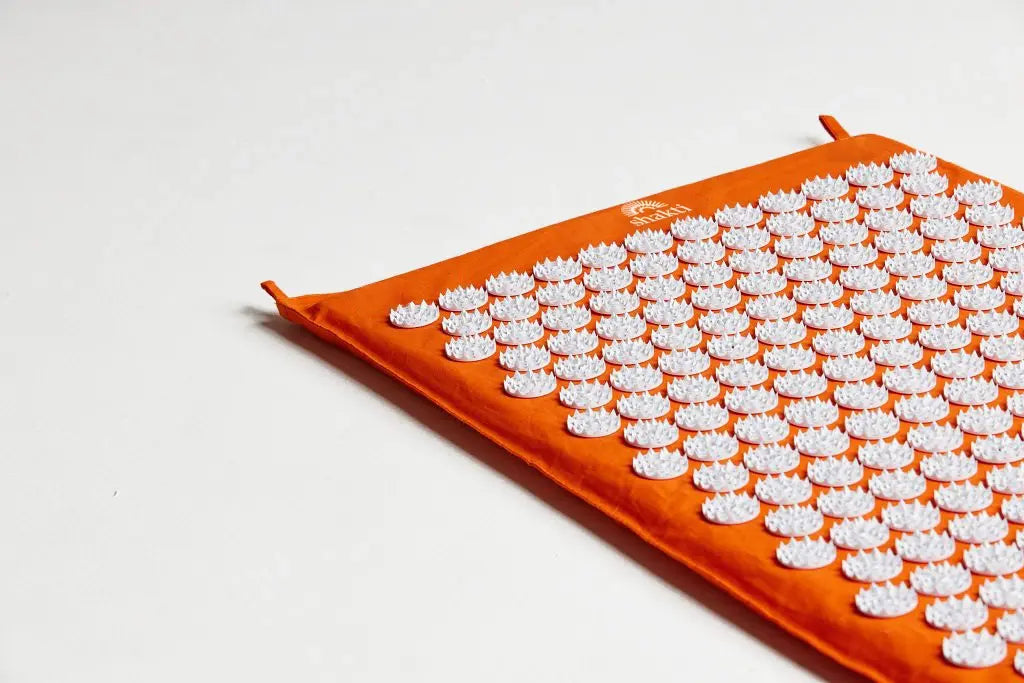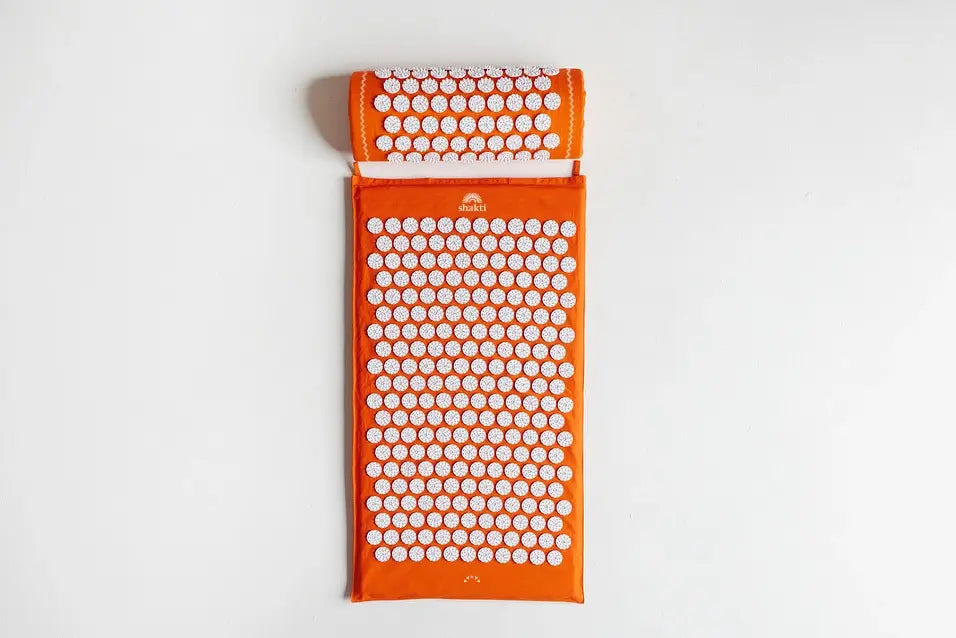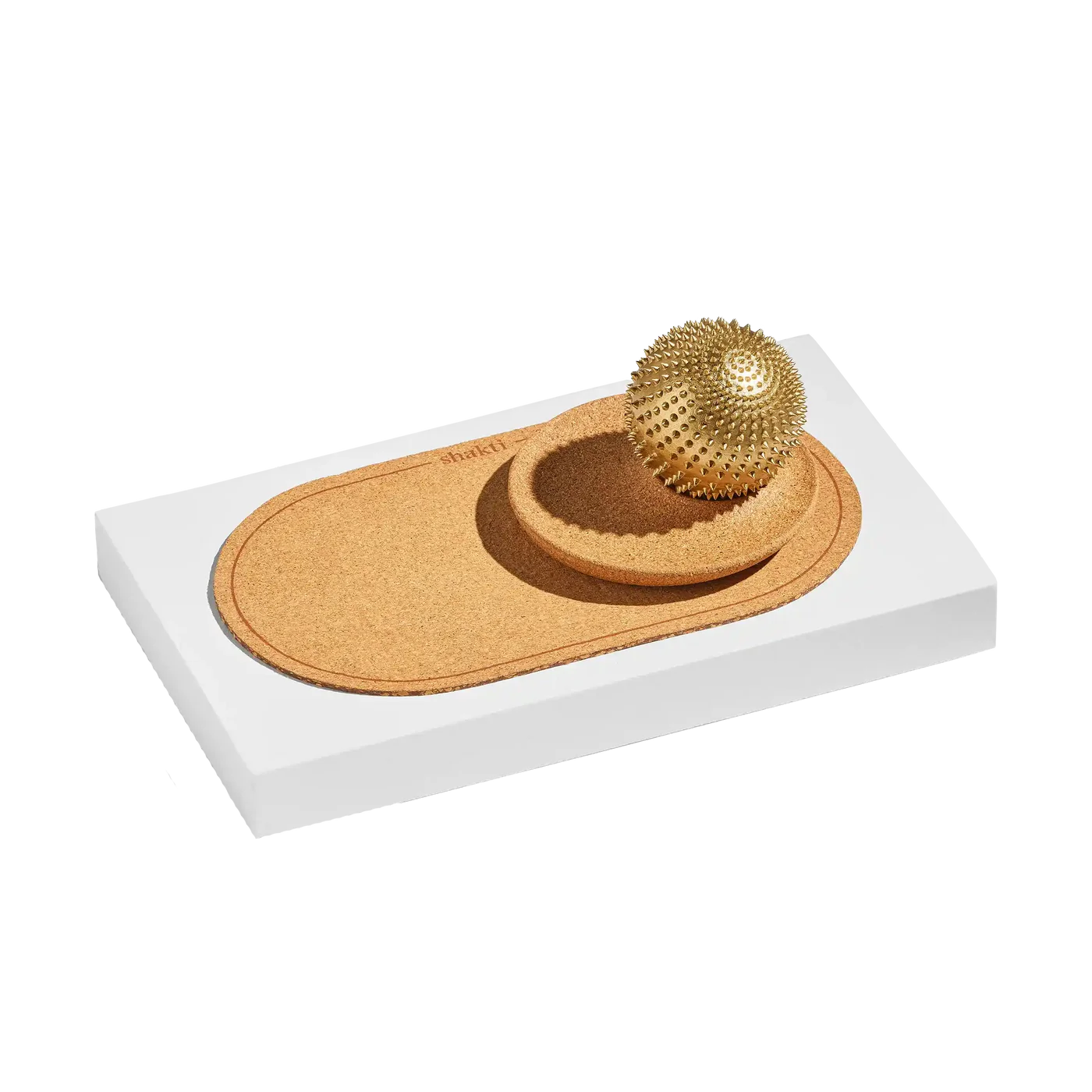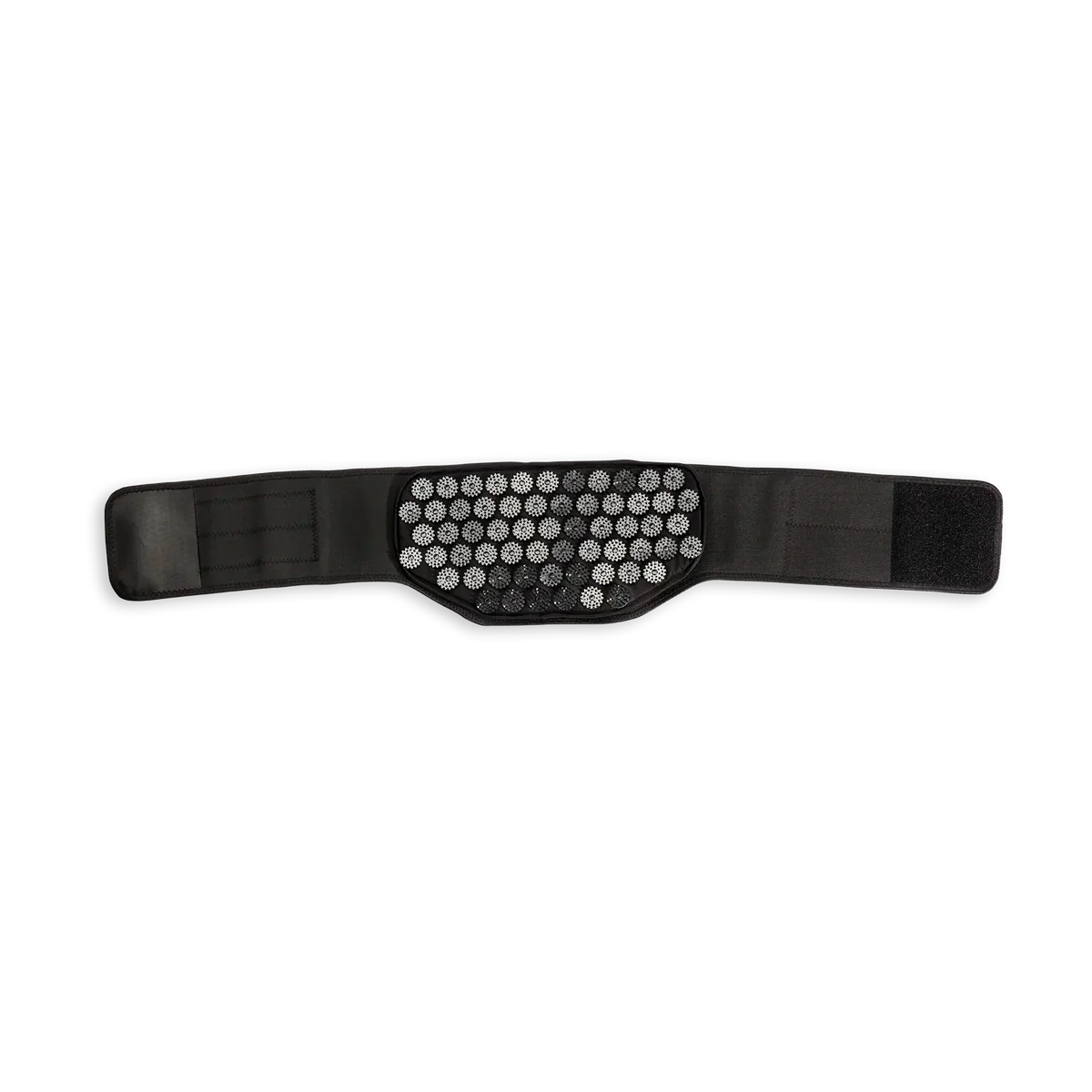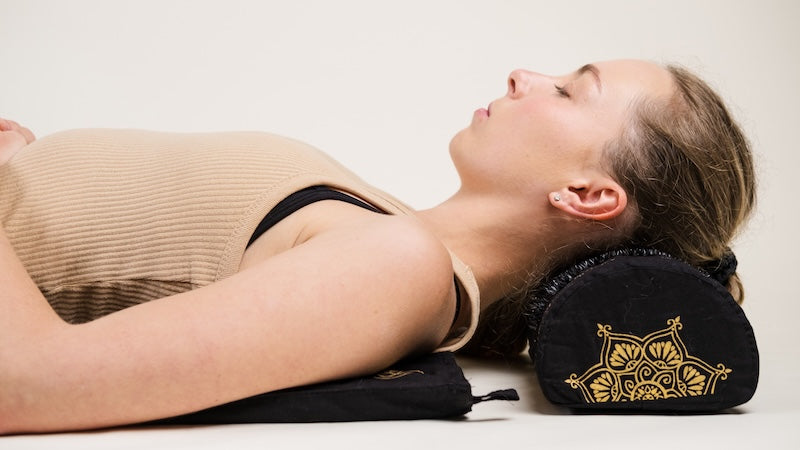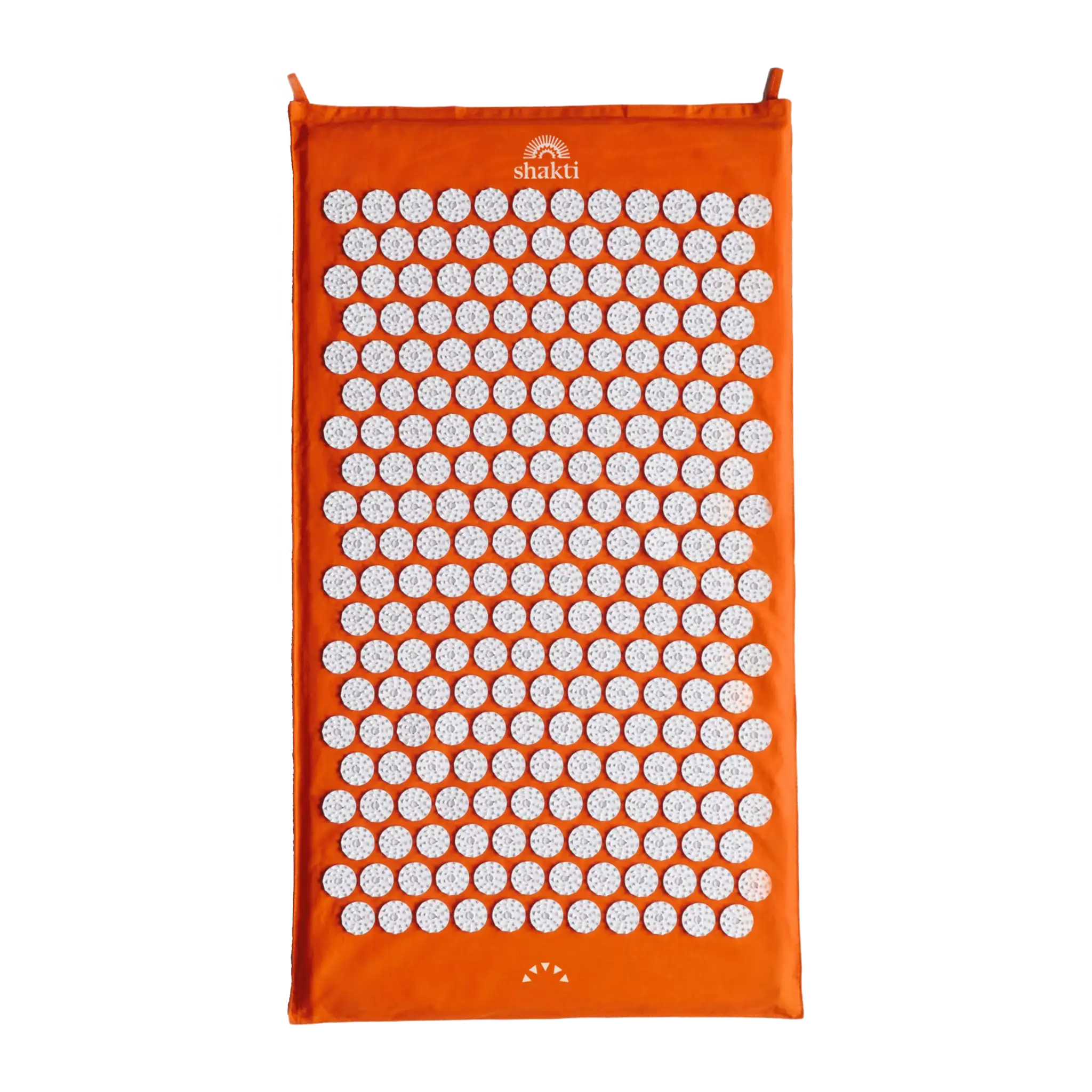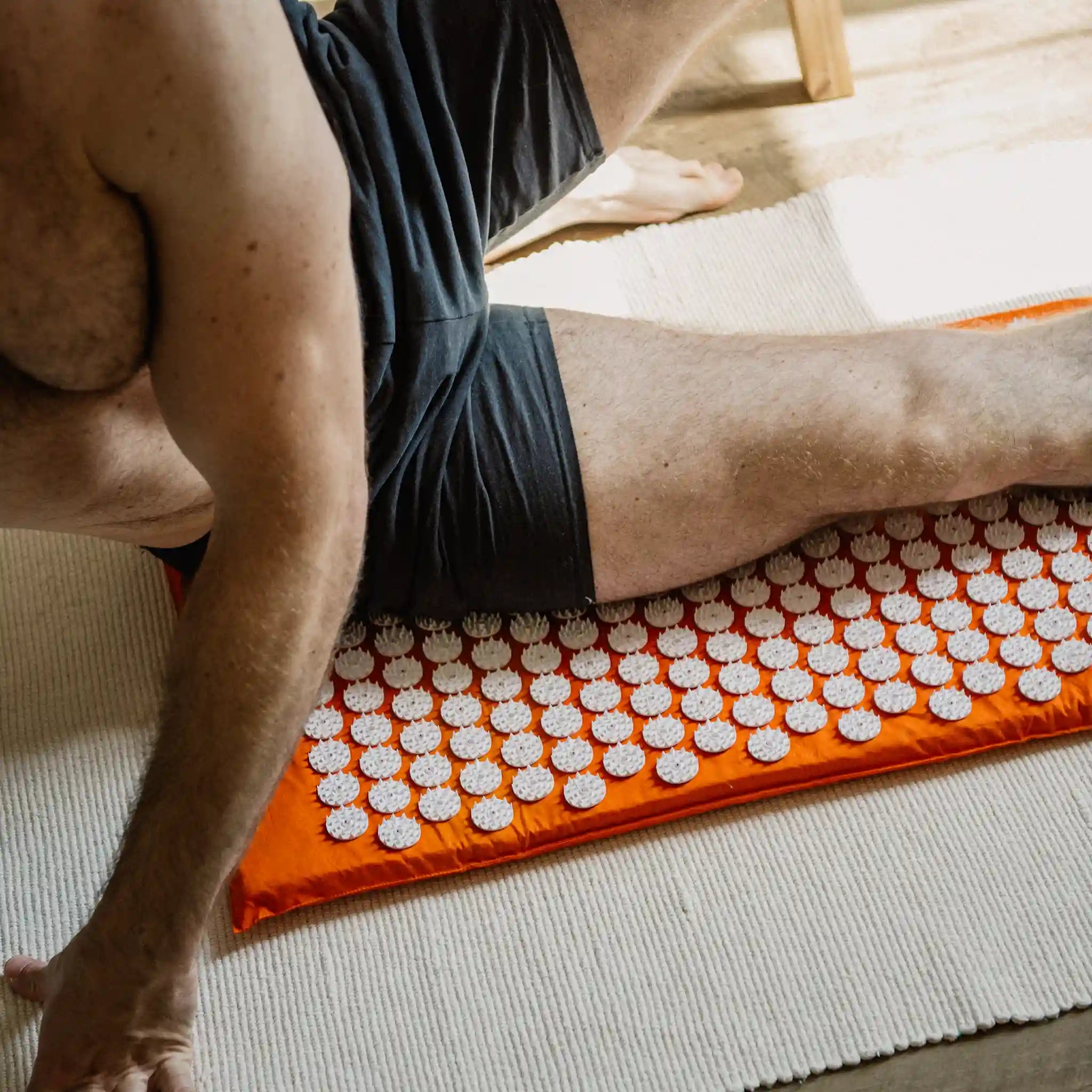Do you sometimes find it difficult to maintain an upright posture after a long day at the computer? Does your head keep sliding forward while your back becomes rounded?
If you are permanently in this position, it can lead to a so-called "vulture neck". Not only does this sound unpleasant, it can also be quite painful - because over time, the incorrect posture causes severe tension that makes your neck and shoulders as hard as concrete.
In this guide, we give you helpful tips on how you can train away the hump in your neck and keep your shoulder and neck area supple in the long term.
Content
2. vulture neck: causes and symptoms
3. can a vulture neck be corrected?
4. these are the 7 most effective vulture neck exercises
5. how to prevent a vulture neck
6 Our conclusion on the vulture neck
What is a vulture neck?
Vulture neck is the term used to describe a poor posture in which your head and the upper part of your neck are bent forward and your lower neck and shoulders fall backwards - similar to the anatomy of a vulture. Vulture neck often occurs due to excessive sitting or constantly looking at screens and can lead to a number of health problems.
Vulture neck: causes and symptoms
The main causes of vulture neck lie in movement patterns and habits that we develop in the course of our lives - such as sitting at a desk or in front of a computer for long periods of time or frequent use of smartphones. Essentially, any activity or posture in which your head is bent forward for long periods of time leads to the development of a vulture neck.
Typical vulture neck symptoms mainly include
- Neck pain triggered by the lack of movement, which can even spread to the shoulders and arms.
- In addition, affected individuals sometimes experience headaches and stiffness in the neck and shoulder area.
- In advanced stages, vulture neck can lead to difficulty breathing due to increased pressure on the chest.

Is it possible to correct a vulture neck?
If you notice the first signs of a protruding neck, there is good news - because there are different approaches that you can use to eliminate the neck hump.
Physical exercises are the most effective. These aim to strengthen and stretch your neck and shoulder muscles, which can lead to an improvement in your overall posture.
If the cause of vulture neck specifically lies in an unfavorable sitting position at work, ergonomic adjustments can help - for example, adjusting the height of the desk or chair and using ergonomic furniture and supportive Pillow. Regular movement breaks and changes in position can also help you to prevent vulture neck and the associated complaints.
These are the 7 most effective vulture neck exercises
First and foremost, a vulture neck is an aesthetic problem, but in the long run it can result in tension, pain and limited mobility. So you should not take it lightly, literally.
With the following 7 exercises you can train away your vulture neck and maintain the mobility and relaxation of your neck.
-
Exercise 1: Neck stretch
Sit or stand upright for this exercise. Stretch your neck upwards as far as possible by pointing your chin towards the ceiling. Hold this position for 5 to 10 seconds and then relax all your muscles. Breathe deeply and consciously into your neck and shoulder area. Repeat the neck stretch around 10 times. It is also ideal as a little "vulture neck exercise for in between". -
Exercise 2: Neck tilt
Sit or stand upright and tilt your head to the left side so that your ear is close to your left shoulder. Hold this position for a few seconds and then return to the starting position. Now perform the same steps on the right side and repeat the exercise 10 times on each side. This stretches your neck muscles and keeps them supple. -
Exercise 3: Shoulder rolls
For this exercise, stand or sit on a chair. Slowly roll your shoulders forwards and then backwards. This exercise can help you to release tension in your shoulders and upper back caused by the vulture neck. -
Exercise 4: Chest opening
Stand with your back against a wall and stretch your arms out to the side. They should form a straight line. Press your palms against the wall and slowly move your arms up and back down. This exercise can help to stretch your chest muscles and optimize your posture. -
Exercise 5: Book balance
Sit on a chair with your favorite book (preferably a thick tome) and place the book on your head. Try to balance the book and keep your head as straight as possible. This will give you a good feeling for the correct position of your neck and head. -
Exercise 6: Thoracic spine and cervical spine mobilization
The thoracic and cervical spine play a central role in training against vulture neck. In this exercise, pull your chin and forehead backwards in parallel to create a double chin. You should feel a slight pull just below the base of your skull. Hold this head position and push your sternum forward and upwards at an angle. Breathe in briefly and then relax. Perform this mobilization sequence several times in succession. -
Exercise 7: Yes-No
Lie on your back for this exercise. Cross your legs, pull them towards your upper body and hold your feet with your hands. Lift your head off the floor and make a double chin. Keep your chin on your neck and move your head alternately in a yes/no gesture (nod, shake your head). Set yourself a target of 20 repetitions per direction of movement.

How to prevent a vulture neck
-
Pay attention to your sleeping position
The way you sleep can have a big impact on your posture. Try to sleep on your back as this position keeps your neck and spine in a neutral position. Using a suitable pillow can help to support the body and reduce neck tension. -
Build on massages and acupressure
Massage away the hump in your neck? It may not be as easy as it sounds. However, regular massages can provide relief by improving blood circulation in the affected area and relaxing the muscles.
Acupressure in particular is a proven method of relieving tension in the neck and shoulder area, preventing poor posture and vulture neck.
Additional tip: Use the benefits of your acupressure mat, such as improved circulation, muscle relaxation and pain relief, to prevent a protruding neck.
Simply lie on your back on the mat so that the pins press against your neck and shoulders. You can also place a rolled towel under the mat to apply extra pressure to the neck area. Start with short sessions of around 10 minutes and gradually increase the time as you feel comfortable. -
Keep moving
Strong and flexible muscles are the key to preventing postural problems. Regular physical activity, especially the exercises from the previous section, can help you avoid vulture neck.
-
Design your workstation ergonomically
Do you spend a lot of time at your desk? Then it should be tailored to your individual needs. Ideally, the screen should be at eye level and your arms should be able to rest on the desk at a 90-degree angle. Remember to take regular breaks and stretch if you spend a long time in the same position.
Our conclusion about the vulture neck
Vulture neck is not an inevitable fate, but a body condition that can be addressed as well as improved with awareness, perseverance and the right strategies. Take the time to listen to your body and treat it well - for example, with regular exercises, massage treatments, relaxation sequences on your acupressure mat, and plenty of exercise.



